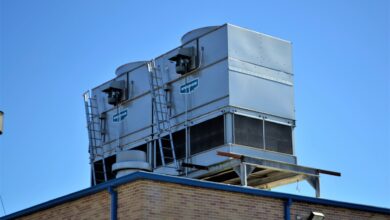How to Avoid Cracks in Plaster?

Early Cracks in Plasters aren’t simply upsetting however they are demonstrative to something wrong in material choice or the technique utilizes for application. The most common deformities seen in Cement Plaster are Plastic shrinkage breaks and drying shrinkage breaks. Allow us now to comprehend the reasons of the event of these breaks in Plaster and steps to be taken to limit them.
Plastic Shrinkage Cracks and How to Avoid Them
Plastic Shrinkage break (Fig 1 and 2) results when an inordinate measure of water is lost from the plaster in the initial not many hours after its application. Whenever the breaks are seen while the plaster is as yet plastic (yet to solidify), they are frequently drifted (completed to make it resemble smooth) and shut at site. Be that as it may, it’s anything but a decent practice as these breaks return some time in not so distant future.
Rules to Avoid Plastic Shrinkage Cracks
- Safeguard the plaster from sun and twist to abstain from drying excessively fast, start plastering timing to keep away from direct daylight and solid breeze on plastering surface
- Immerse the workmanship wall enough with water prior to plastering. This will stay away from the block work from retaining the water in plaster
- Begin restoring as soon as could really expects assuming the weather conditions is sweltering, blustery and dry (less damp)
- Try not to utilize sand which needs fine material (under 15% by mass passing 0.150mm strainer or use Sand of Fineness modulus beteween 2.4 to 2.6)
- In the event that sand needs fine material, add some lime into cement plaster.
Drying Shrinkage Cracks and How to Avoid Them
Drying shrinkage result (fig 3 and 4) because of dampness misfortune after the plaster solidifyy. The plaster will undoubtedly therapist and break. Ordinarily, Plaster applys in layers that are excessively thick (i.e., >20mm) will generally break thusly. These breaks are typically steady and can load up with break fix mortar and cover up.
It is feasible to lessen drying shrinkage and subsequently the resultant breaks.
Rules to try not to Dry Shrinkage Cracks
- Try not to utilize exceptionally fine sand requiring more water (Don”t use sand with Fineness modulus < 2.2). We suggest utilization of plaster Sand for the end goal of Plastering.
- Try not to utilize a rich plaster blend (with High Cement Content). Use cement motar blend of 1:4 or beneath relying upon the nature of Sand while using Plaster Machine.
- Keep away from OPC ideally utilize flyash mix cement (PPC). PPC has less fieriness of hydration so will brings about lesser breaks when contrasts with OPC
- Use water diminishing admixture in plaster blend
- Stay away from exceptionally thick plaster layers (i.e., thickness more than 15mm). In the event that you want more thickness, construct plaster in layers of 12-15 mm with a hole of 3 days
- Do the restoring following the setting season of plaster mortar for a time of least of 07 days
Step by step instructions to fix Shrinkage Cracks
- Shrinkage breaks are little (up to 2mm) taking irregular headings showing up in plaster walls and roofs, generally these aren’t anything to stress over as the primary design is as yet sound , these are essentially name non-underlying cracks.If paint applies on it, without going to the cracks,the breaks will be noticeable on painted surface ,a blemish for all.
- Shrinkage breaks in plaster should initially enlarge with the goal that filler can push right in and has something to key on to.The corner of a scrubber or filling/clay blade is great for eliminating any free plaster and for opening up and developing the break. Dry paint brush can utilize along the line of the break to eliminate any free residue and soil.
- Blend an amount of filler according to the manufacturer”s guidelines. And prior to applying it, hose ( within the break utilizing a little paint brush dunk in clean water.
- Hose within the break utilizing a little paint brush plung in clean water. Apply break filler glue ,a polymer change prepares to utilize glue accessible .
- Utilize a filling/clay blade to apply the filler along the line of the break and press the filler into it – leave the filler to please with the encompassing surface.
- Plunge a perfect filling/clay blade in clean water and run it along the line of the break to even out the filler to the surface around it.
- The treat surface can now be taken in the mood for Painting.




